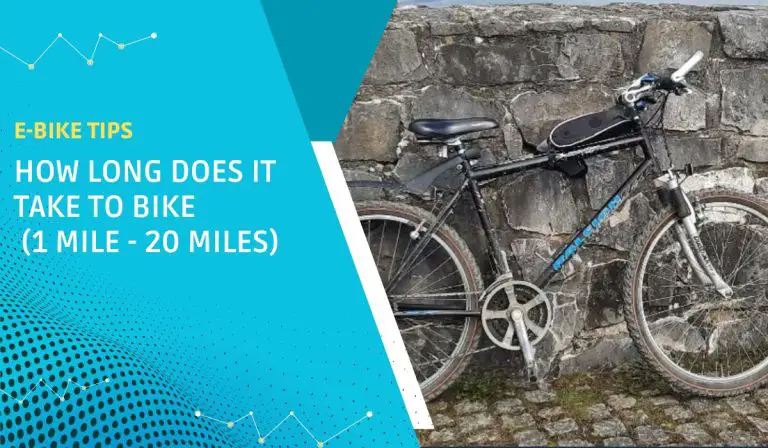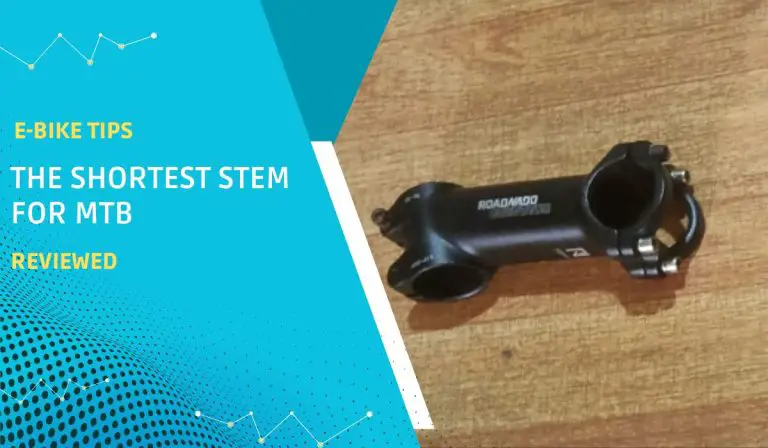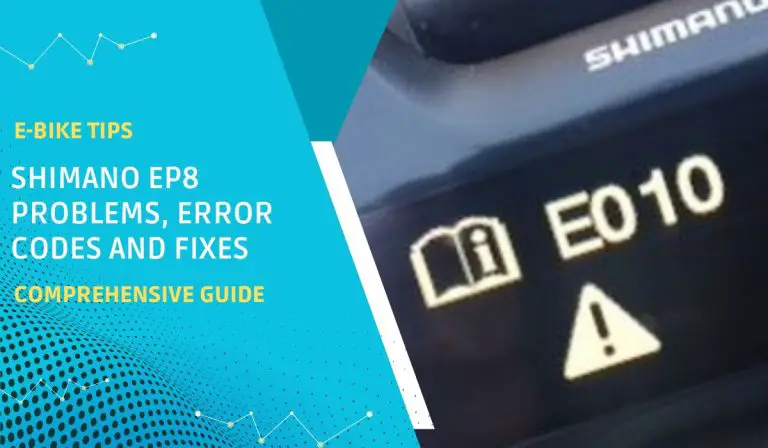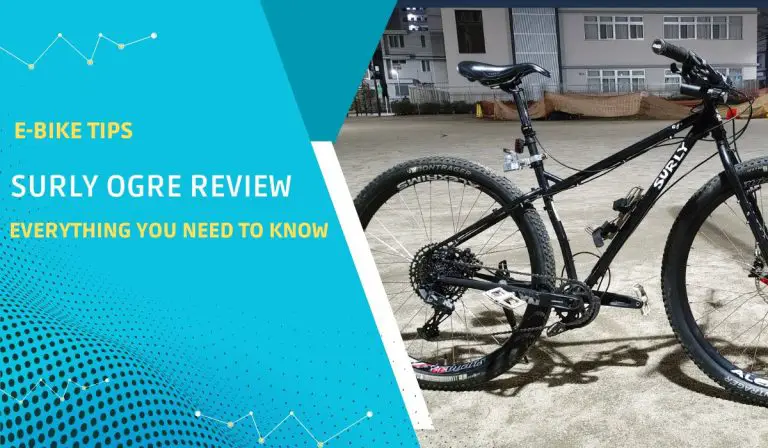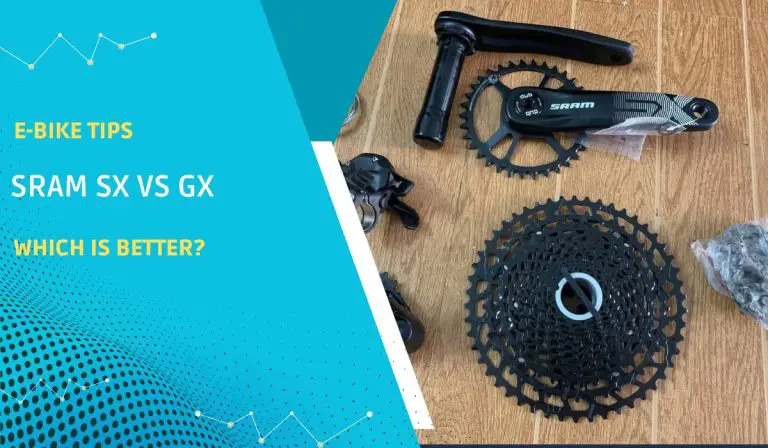The time it takes to bike a specific distance can vary depending on several factors, including your biking speed, terrain, weather conditions, and personal fitness level. If you’re biking at a moderate pace of around 12–15 miles per hour, it will take approximately 4-5 minutes to cover 1 mile. For a 20-mile distance, approximately 1 hour and 30 minutes
Last weekend, I decided to take my bike out for a spin along the scenic trail. With the sun shining and a light breeze in the air, I pedaled enthusiastically towards my goal of 10 miles. The journey was invigorating, passing through lush landscapes and charming neighborhoods. As I checked the time on my watch, I was pleasantly surprised to realize that I had covered the distance in just under 35 minutes. It was a perfect blend of exercise and adventure, leaving me with a sense of accomplishment and a smile on my face.
As an active biker with enough experience to know how long it takes to bike to different distances and at different biking speeds, I will be sharing tips. These tips will be centered around calculating biking speed and rough time estimates at different distances.
Skip To Section Here
Factors Affecting Biking Speed:
Numerous factors that affect biking speed can alter the amount of time it takes to travel a certain distance. Some of the key factors and their impact are explained below:
- Terrain: The type of terrain plays a vital role in biking speed. Uphill segments demand more effort and reduce speed, while downhill stretches can significantly increase speed. Uneven surfaces and off-road trails also impact speed, requiring cautious navigation. When I bike on flat sections, I effortlessly cruise at a swift pace, covering distances quickly.
- Weather Conditions: Weather elements like wind, rain, and temperature affect biking speed. Strong headwinds slow down bikers, while tailwinds offer a boost. Rainy conditions can decrease traction and visibility, impacting speed and safety. When I bike on a windy day, heading into the wind feels like an uphill battle, and my usual speed drops as I struggle against the gusts. But when I make a turn and suddenly have the wind at my back, I feel a surge of speed that effortlessly propels me forward.
- Rider’s Fitness Level: Personal fitness greatly influences biking speed. Experienced and well-trained riders can maintain higher speeds for longer durations, covering distances more quickly compared to beginners.
- Type of Bike: The type of bike being used matters. Road bikes designed for speed have streamlined frames and thin tires, while mountain bikes are sturdier and built for rough terrain. Different bike types affect the ease of pedaling and overall speed potential.
- Road Conditions: Smooth, well-paved roads enable faster riding compared to bumpy or gravel-covered surfaces. Road conditions impact pedaling efficiency and overall comfort, directly affecting biking speed.
The interplay of these factors can lead to variations in biking times. For example, when I try to cover 20 miles on a flat, smooth road, I do so in less than an hour. However, the same distance could take considerably longer for a less fit rider on a mountain bike, navigating hilly terrain and battling strong headwinds.
Average Biking Speeds:
Here’s a breakdown of average biking speeds based on different circumstances:
- Casual Riding:
- Average Speed: 8–12 mph (13–19 km/h)
- Description: Casual riding includes leisurely bike rides, sightseeing, or family outings. This pace allows riders to enjoy their surroundings and engage in conversations while pedaling.
- Commuting:
- Average Speed: 12–16 mph (19–26 km/h)
- Description: Commuting speeds are slightly higher as riders often have destinations to reach within a specific timeframe. This pace is suitable for urban or suburban areas with moderate traffic and road conditions.
- Fitness Training:
- Average Speed: 16–20+ mph (26–32+ km/h)
- Description: Fitness training rides involve a more intense effort to improve cardiovascular fitness and endurance. Cyclists aiming for fitness often maintain higher speeds over longer distances.
Some parts of the table below were sourced from the Bike Lock Wiki.
| CYCLIST LEVEL | Average Time (for 5, 10, 15, and 20 miles) | |||
| 5 miles | 10 miles | 15 miles | 20 miles | |
| Beginner | 30 minutes | 1 hour | 1 hour, 30 minutes | 2 hours |
| Intermediate | 18 minutes, 45 seconds | 37 minutes, 30 seconds | 56 minutes, 15 seconds | 1 hour, 15 minutes |
| Advanced | 15 minutes | 30 minutes | 45 minutes | 1 hour |
| Professional | 12 minutes, 30 seconds | 25 minutes | 37 minutes, 30 seconds | 50 minutes |
| CYCLIST LEVEL | RANDOM BIKING TIMES AVERAGE SPEED | |||
| 8 miles | 12 miles | 16 miles | 20 miles | |
| 30 minutes | 16 mph | 24 mph | 32 mph | 40 mph |
| 37 minutes, 30 seconds | 12.8 mph | 19.2 mph | 25.6 mph | 32 mph |
| 45 minutes | 10.7 mph | 16 mph | 21.3 mph | 26.7 mph |
| 50 minutes | 9.6 mph | 14.4 mph | 19.2 mph | 24 mph |
The chart above was sourced from the Bike Lock Wiki.
Calculating Biking Time:
The formula for calculating biking time is Time = Distance / Speed. It is a simple and effective way to estimate how long it will take to cover a certain distance on a bike. In this formula, “time” represents the time taken to complete the journey, “distance” is the length of the route in miles or kilometers, and “speed” is the average biking speed in miles per hour (mph) or kilometers per hour (km/h).
Step-by-Step Guide to Calculating Biking Time
Here is a step-by-step guide to calculating biking time:
- Determine Distance: First, identify the distance you intend to cover on your bike ride. This could be the distance between two points on a trail, your commute route, or any other biking journey.
- Know Your Average Speed: Estimate your average biking speed for the journey. If you’re not sure, consider factors like your fitness level, the type of bike you’re using, and the terrain you’ll encounter.
- Convert Units: Ensure that the units for distance and speed are consistent. If your distance is in miles, use miles per hour for speed. If your distance is in kilometers, use kilometers per hour for speed.
- Apply the Formula: Plug the values into the formula. This will give you the estimated time it will take to cover the specified distance at your average speed.
- Calculate: Perform the calculation to find the time in hours. Remember that if your speed is in mph or km/h, the time will be in hours.
For Example:
Let’s say you’re planning to bike 15 miles at an average speed of 10 mph.
Time = Distance / Speed
Time = 15 miles/10 mph
Time: 1.5 hours
If you want the time in minutes:
Time in minutes = 1.5 hours * 60 = 90 minutes
Keep in mind that this formula provides an estimate and doesn’t account for breaks, stops, or changes in speed during the journey.
Biking 1–5 Miles:
Biking at a moderate pace of around 12–15 mph, you can cover 1 mile in approximately 4-5 minutes. For a 2-mile distance, the time taken would be roughly 8–10 minutes. While 3–4 miles would take about 12–15 minutes to 16–20 minutes, and for 5 miles, approximately 20–25 minutes at this pace,
Suitability of Biking for Short Distances and Urban Commutes
In urban settings, biking provides an efficient and sustainable solution for short commutes. Biking is an incredibly efficient mode of transport for short distances. It often proves faster than driving through congested urban traffic, especially during rush hours. Biking allows you to bypass traffic jams and reach your destination more quickly. It also saves money on fuel, parking, and public transportation costs. Maintenance expenses for bikes are relatively low compared to cars. Over time, these savings can accumulate significantly.
For distances within the range of 1 to 5 miles, biking is an eco-friendly alternative. It produces no emissions, reduces pollution, and contributes to a greener environment. This makes biking an attractive option for those who want to minimize their carbon footprint. Biking short distances is also a convenient way to incorporate physical activity into your daily routine. It engages your muscles, boosts cardiovascular health, and burns calories. Short biking trips contribute to a more active lifestyle and improved overall fitness.
Biking 5–10 Miles:
Biking within the range of 5 to 10 miles offers an efficient way to cover moderate distances. Extending the journey from 5 miles to 7 miles might require about 28 to 35 minutes. For a 10-mile distance, expect to spend approximately 40 to 50 minutes on your bike.
Health Benefits and Daily Exercise Goals
Engaging in biking within the 5- to 10-mile range provides numerous health benefits. Biking these distances elevates your heart rate, contributing to improved cardiovascular fitness. It enhances blood circulation and strengthens the heart muscles. As you pedal, your leg muscles work in tandem, building strength and endurance. Biking also engages muscles in your core and upper body, promoting balanced fitness.
A 10-mile bike ride can burn around 300–400 calories, helping with weight management and promoting a healthy metabolism. It is gentle on the joints compared to high-impact activities, making it suitable for people of various fitness levels and ages. Outdoor biking also provides an opportunity to connect with nature and enjoy fresh air, promoting mental relaxation and reducing stress.
For those aiming to meet daily exercise goals, biking within the 5 to 10-mile range can be seamlessly integrated into daily routines, such as commuting to work or running errands. The time estimates for these distances make biking a practical choice, especially for those with busy schedules. Varying your biking routes and distances keeps the activity engaging and prevents monotony.
Biking 10–20 Miles:
Biking distances spanning 10 to 20 miles introduce a more substantial journey, with time estimates varying accordingly. Covering 10 miles can take around 40 to 50 minutes at an average speed of 12 to 15 mph. Moving on to 15 miles, the biking time extends to approximately 60 to 75 minutes while maintaining the same pace. If you’re planning a 20-mile ride, expect to spend around 1 hour and 20 minutes to 1 hour and 40 minutes on your bike.
However, longer rides come with unique challenges and considerations that require careful attention.
- Proper hydration and nutrition become essential for sustained energy.
- Effective energy management is crucial to avoiding early burnout. Adjusting your speed to maintain stamina over the distance is key.
- Planning short breaks for rest, stretching, and refueling prevents fatigue and supports muscle recovery.
- Thorough route planning becomes crucial for longer rides. Familiarize yourself with the route, including potential rest stops and facilities.
- Ensuring your bike is in optimal condition is a must.
- Dressing appropriately for the weather and wearing comfortable biking gear enhances comfort throughout the journey.
- Effective time management is essential, considering factors like daylight hours and potential delays.
Real-Life Examples:
Below are experiences from real cyclists who have tackled various distances.
This picture here shows a poll on how long it takes the average person to bike to a nearby grocery store:
Here, a biker asks how long it takes to bike around 5km:
This picture shows two straightforward answers:
Biking times are influenced by a range of variables, such as terrain, weather, and personal fitness levels. The ability to adapt to these scenarios is a vital skill for bikers. Adapting involves modifying your pace and approach to suit changing conditions. For instance, urban commuting demands adjusting to traffic flow, while trail riding requires varying speeds on different terrains. Adapting is especially important when the weather shifts unexpectedly or when riding in a group, ensuring safety and synchronization.
Safety Precautions:
It is important to put safety first in every activity. So when going biking, carry water and snacks to help replenish fluids and nutrients during the journey. Perform pre-ride checks on tire pressure, brakes, and gears on your bike, and prioritize safety by wearing a helmet, obeying traffic rules, and remaining visible to motorists.
Conclusion
Biking from 1 to 20 miles is factor-dependent. Following the speed formula can get you a relatively right answer to “how long it takes”. However, practicing biking yourself will not only make you get used to estimating biking times but also keep you fit and healthy.
Thanks for reading.

